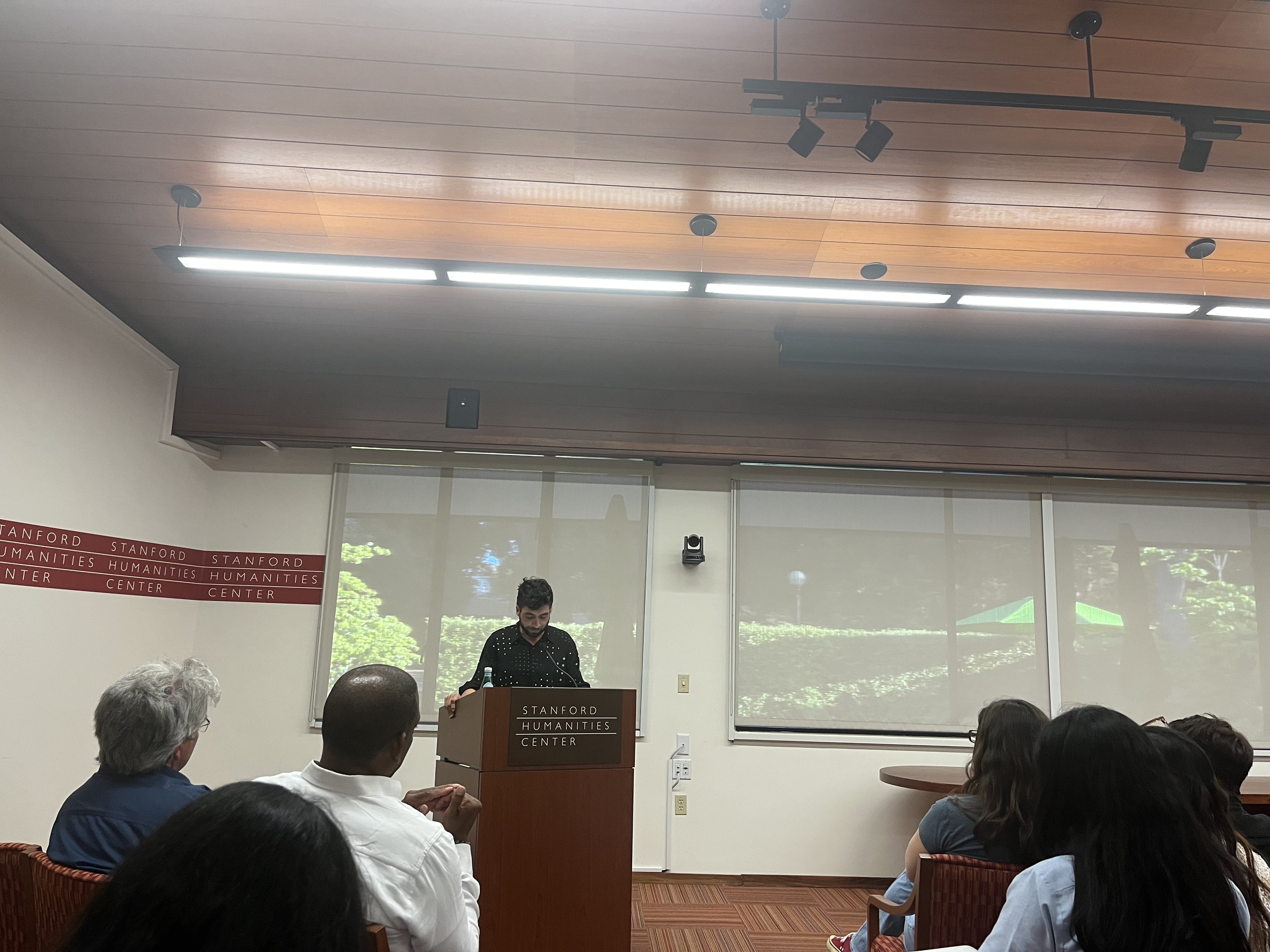This article is a review and includes subjective thoughts, opinions and critiques.
On Wednesday night, Stegner Fellow in Fiction Nevarez Encinias delivered an evening of movement and description in literary form. A dancer by training, Encinias’s background came through in his writing through his elaborate physical descriptions and seemingly choreographed prose.
Throughout the year-long series of Stegner Fellow Readings, fellows are invited to give a public reading of their work. Even though the final Stegner Fellow Reading of the year was originally meant for two readers, Encinias made the trip to the Humanities Center worthwhile on his own. When Stegner Fellow in Poetry, Dashaun Washington, could not make it to the event, Encinias filled all the space and more with his descriptive prose.
Encinias read an excerpt from his short story “American Boys,” part of his unfinished book entitled “Bad Dance.” He described the book as “a novel in stories” that each follow the same narrator, but with a different tone. The prose he read on Wednesday was rich in visuals, physicality and use of similes.
The short story centered on identity, specifically that of American men. The excerpt was made up largely of the description of one such man, who was the object of the narrator’s observation, and followed the ins and outs of their relationship and interactions. The story and descriptive language twisted and turned, often subverting audience expectations. “Making [the man] laugh made me feel like a patriot,” Encinias writes. The audience laughed.
Reading between the lines, Encinias also navigated the separation between characters in a story and people in real life. “American Boys” was largely a story of observation and description. When does the way one describes another start to say more about the observer than the person being described? All of these questions were raised by Encinias’s prose.
Encinias’s descriptive writing style allowed him to capture the subtleties of human movement and behavior. It explored flirting as a form of “flattery” and “persuasion.” There was a close focus on hands, thighs, mouths and the way we unwittingly copy the mannerisms of the people we are close to. The reading oozed with a sense of choreography, and eventually the story reached its finishing pose.
In the Q&A portion, the audience asked Encinias about his experience with dancing and writing, his narrative voice and his writing process. The writer said that dancing calls him to write about “bodies and the way bodies move,” adding that he chose to write the five stories in “Bad Dance” with the same narrator and different tones because of the structure of a repertory dance concert. These concerts have different choreographies with the same company, and he was interested in “how this might be achieved in stories.”
With regard to his writing process, Encinias emphasized thinking about his own body, focusing each story around a different written text and the idea of having a “solid first draft” before often making minimal revisions. When asked if he people-watches in order to write such clear visuals of physicality, he responded, “certainly.” He explained his process as spending no more than 90 minutes at his desk, and then going out into the world. “I people watch, kind of… most of the day,” Encinias said as the audience erupted in laughter at this unexpected reality of his life as a writer. The revelation of his writing process also made the inspiration for his detailed observation and description quite clear.
Encinias ended the evening with a few pieces of advice for his audience. First of all, he urged them not to stay at their desks all day. He also encouraged audience members to think of their body as a “place” or “setting” in which “things change,” and to listen to their bodies and the movement inside of them.
In doing so, Encinias wrapped up a year of Stegner Fellow readings.
